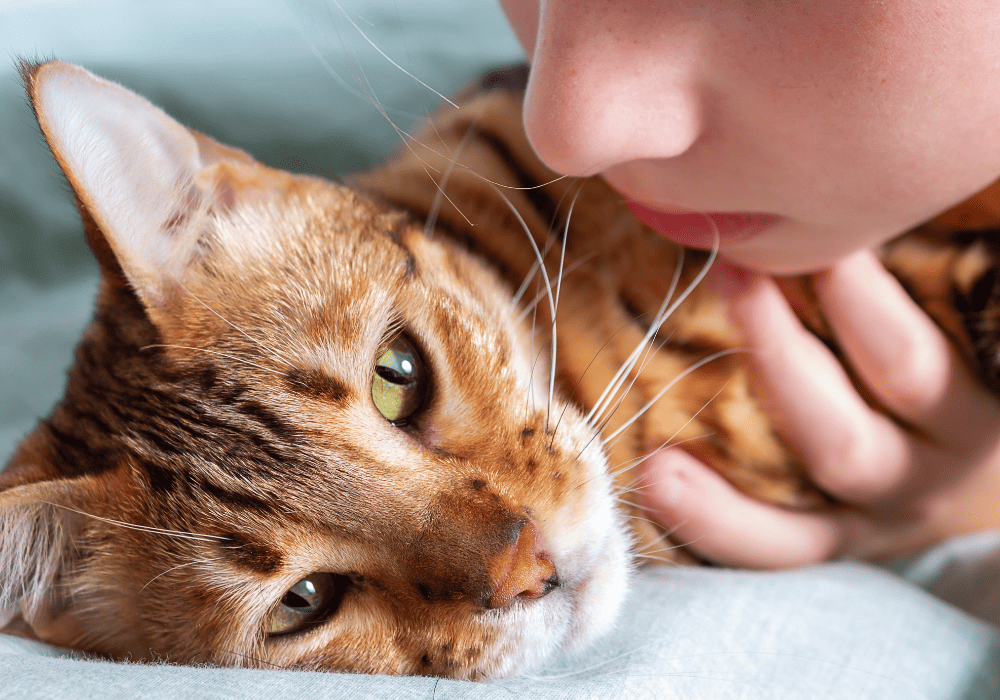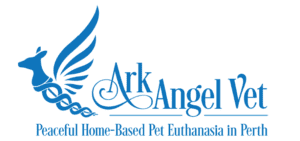Knowing when to let your pet go may be the most difficult decision you will ever make for them. At home pet euthanasia and it’s timing is a heavy responsibility, but one that comes with the gift of love and compassion.
Thankfully this is not a decision that you will have to make alone. There are a number of ways that you and your family can provide care and comfort for your pet during the final leg of their journey, including at home pet euthanasia. As your pet’s condition declines, Dr Patrick will be with you to provide advice and guidance at every step.
Ultimately, the final decision will be yours, however please be assured that when it’s time to say goodbye, you will have all of the information that you need to make the best choice for your beloved furbaby.
Quality of Life Discussion
As your pet’s health and enjoyment of life declines you will begin to notice changes in their appearance and demeanour. At this time, Dr Patrick will conduct a Quality of Life discussion to help you plan and prepare for your pet’s care and to ensure that they are kept as comfortable as possible.
A quality of life consultation involves assessment of the following criteria:
- Pain control (including breathing ability)
- Feeding – does the pet require assistance with eating? Are they eating enough?
- Drinking – does the pet require subcutaneous fluids to stay hydrated?
- Hygiene – can the pet still groom themselves, especially after toileting?
- Mobility – can the pet stand and walk without assistance?
- Enjoyment of life – does the pet show happiness or interest in daily activities?
- Do the good days still outnumber the bad days?
Dr Patrick will score the results to ascertain if your pet is experiencing an acceptable quality of life, and then discuss the results with you.
Is My Pet in Pain?
Unlike us humans, cats and dogs are unable to tell us verbally whether or not they are in pain. However by observing their body language and non-verbal cues we are able to learn more about how they are feeling.
Signs of pain may include:
- Vocalisation (crying, groaning, whimpering)
- Panting
- Pacing or restlessness
- Lethargy
- Excessive licking or scratching
- Reluctance to eat or drink
- Difficulty with toileting and self-grooming
- Lack of response to favourite people, toys, activities etc.
Your regular vet may have prescribed pain relief for your pet to keep them comfortable. Dr Patrick will also be able to advise you if your pet requires additional support or if medications are no longer sufficient to maintain your pet’s enjoyment and participation in everyday activities.

Hospice and Palliative Care
According to the International Association for Animal Hospice and Palliative Care (IAAHPC), “Animal hospice is care for animals, focused on the patient’s and family’s needs; on living life as fully as possible until the time of death [with or without intervention]; and on attaining a degree of preparation for death.”
Hospice care focuses on the dying process, whereas palliative care is about keeping your pet comfortable. When palliative care is no longer sufficient to keep your pet free from pain and prevent suffering, then the next phase is hospice care.
Palliative Care
Palliative care is about providing comfort and relief to a pet at the end of their life. Rather than seeking to resolve medical conditions, palliative care aims to prevent suffering by managing pain and taking practical steps to alleviate discomfort. These may include:
- Management of pain and symptoms
- Nutrition
- Hygiene and assistance with toileting
- Bedding
- Mobility (e.g. providing steps to assist access to furniture and bedding.)
- Assistance with administering medications
- Wound care
Hospice Care
Hospice includes all of palliative care and aims to provide comfort and support to the whole family. It offers pets a humane, dignified and peaceful passing and supports families through the emotional distress that accompanies the loss of a furry companion. Hospice care also gives families time to prepare and decide what you want for your pet at the end.
In addition to palliative care, hospice care may also include:
- Training for families to nurse their pets at home.
- Pastoral support or counselling for families.
- Consultation for pet cremation services and aftercare.
Getting Ready
Having made decisions about your pet’s end of life care, there are a number of ways that you can help you and your family to prepare to say goodbye.
Euthanasia at home
If you choose at-home euthanasia for your pet, Dr Patrick will send you his euthanasia protocol ahead of time so that you are prepared and know what to expect on the day. This will answer common questions such as whether or not to feed your pet or let them outside for toileting.
Upon arrival, Dr Patrick will take a medical history of your pet (if not already provided) and do a physical examination so that he can discuss your pet’s issues and quality of life. This is to help you make an informed decision regarding euthanasia for your pet.
Dr Patrick will allow you as much time as you need. There is no pressure on you to make a decision or to proceed until you are ready.
When you are ready, Dr Patrick will explain the process and the steps involved, including sedation and administration of the IV injections.
Bucket List
In recent times, many pet parents are documenting their pet’s final journey and taking solace by visiting their pet’s favourite places, indulging in some special treats and holding a ‘celebration of life’ event.
In addition to providing your pet with some joy in their final days, this process also serves as a way to provide comfort, acceptance and healing for grieving families.

Helping Children to Say Goodbye to a Pet
- Be honest. The best approach is to be direct and keep it simple. Let your child know that their pet is no longer in pain.
- Let them say goodbye. Give your children a chance to say their farewells before euthanising a sick pet so that they understand why their friend is no longer with them.
- Let them ask questions.
“Where did she go?” “Will I see him again?”
Answer honestly and let your values and spiritual beliefs guide your responses. For instance, “Fluffy is gone now but he is happy in heaven and playing with the angels now.”
- Have a memorial. Get your kids involved in honouring and remembering their pet in a way that has meaning for them. Children can draw a picture, create a photo album or scrapbook, or plant a tree for them in the garden.
Aftercare Arrangements
At such an emotional time, making decisions about cremation or burial can seem overwhelming. For this reason, Dr Patrick will assist you with making the necessary arrangements for collection and aftercare.
After your pet has passed away peacefully you will have some time to spend with them before your pet is collected and transported to the cremation facility. They will be treated with compassion and respect at all times and a caring representative will be in touch to make arrangements for your final wishes for your pet.
Memorials and keepsakes
To help you honour your pet’s memory and keep them close, there is a vast range of memorabilia and urns available to choose from. You may choose an urn or a memory box to keep their ashes in, or you might decide to bury your pet’s ashes and mark the spot with an engraved garden plaque.
Making these choices as a family ahead of time will relieve some of the stress associated with losing your beloved companion.
Photo tributes
At the time of euthanasia Dr Patrick will offer you the opportunity to take some photos to respectfully mark your pet’s passing. He will provide flowers, music and candles to offer comfort and to solemnise the event. You may also wish to take some photos of your pet at their favourite location, or spending some special time with family members.
Grief support
The days and weeks following the loss of your beloved pet can be excruciatingly difficult for the whole family. There is no defined timeline for grief and everybody copes differently.
There is no shame in reaching out and asking for support.
We highly recommend the services of Tracey Woods, Pet Loss Bereavement Counsellor at Pet Eden. Tracey is available for either one-on-one counselling or group sessions to provide support and guidance, and to make the sorrow of losing your beloved pet a little less painful.
For further information and advice, please contact Dr Patrick.



